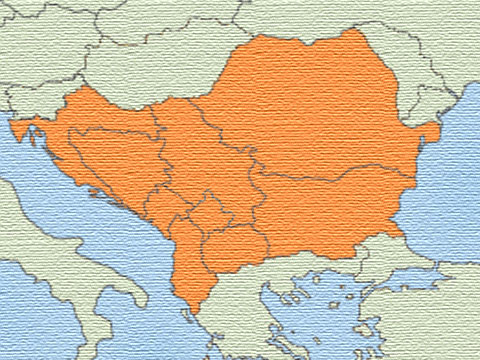 A quick glance at the latest list of the top 100 companies in Southeast Europe yields no surprises, confirming the broad trends that have been obvious for a while in the region:
A quick glance at the latest list of the top 100 companies in Southeast Europe yields no surprises, confirming the broad trends that have been obvious for a while in the region:
- The global economic slowdown has had a greater effect here than in other parts of the world, with sales at the top 100 companies declining over 14%.
- The corporate landscape is fluid and dynamic, with 16 new companies appearing on the list.
- Lifestyles continue to change and westernize over time. Retail sales reflect greater interest in consumer goods.
Let’s take a more detailed view of the figures and see what they reflect about the current state of the economy in Southeast Europe.
Oil and gas companies dominate the list, taking 24 of the top 100 places. As a group, they posted a turnover of €25.6 billion, down 28% from the previous year due to lower oil prices worldwide. But even so. The fact that they are still generating figures like these will give anyone who has invested in oil and gas, with the likes of EnergyFunders, (https://www.energyfunders.com/oil-and-gas-investments/) hope that they made the right decision to diversify their portfolio. With that being said, electric utilities make up the second-largest block, with 22 companies generating a turnover of €14.1 billion, roughly flat year on year. Together these sectors account for a combined €39.7 billion, more than half of the total revenue of the top 100 companies. Is it any wonder the energy industry gets so much attention in Bulgaria?
Companies in basic industries such as metals and construction have been hit hard in the downturn, showing revenue declines of 34.9% and 21%, respectively. Sales at automotive companies declined 14.2%.
As a whole the SEE list is extremely volatile. Fifty six companies shifted more than 10 positions or are new to the list, and a further 16 shifted 5-9 places. New companies being formed, mergers, acquisitions and spin-offs all contribute to this effect, which is unlikely to change much as long as the regional economy is in flux.
The brightest stars seem to be consumer product companies and retail chains, which turned in impressive growth figures given the overall shrinking economies of 2009. Most of them could do so, possibly because of the surveys like MaxDiff Analysis, which helped them get real-time data on what customers think about their products, giving them an opportunity to instantly upgrade the products (if needed) according to the customers’ tastes. It is possible that improving their product quality has contributed positively to their overall growth. There is also a possibility that the company might have put in a little more effort that consumers may not have been aware of. For instance, they would have opted for positive publicity, perhaps hired the services of a reputation management company (who can not only remove negative comments from the Web but also can offer google image removal), created a good image in front of the potential customers to grab their attention, and be of interest to them.
Anyway, apparently, six food and beverage companies, including two new entries, turned in an average sales increase of over 9%. The number of wholesale/retail companies on the list increased from 10 to 15, with 5 of them new this year. Wholesale/ retail now makes up 16.7% of turnover in the top 100, with all but one company showing increased turnover from the previous year. Performance in these groups continues the trend towards increased material consumption as availability and assortment of consumer goods improve throughout the region.
Another sign of changing times is the first entry of a services company on the list. Tisak, a diversified provider of distribution, retail and marketing services entered the list at number 91, demonstrating that SEE is already moving along the labor contribution path from agriculture to manufacturing to services that western economies experienced in the 20th century. As SEE countries look towards future economic development, they would do well to plot their trajectories against this well worn path and aim directly at services and the information society for future growth.
The addition of Greece and perhaps even Turkey to this list would make it perhaps even more valuable as a tool for understanding the region, since both of those countries play large roles in neighboring countries. Both countries rank among Bulgaria’s top 5 trading partners. Greece was Bulgaria’s largest export market in 2009.












